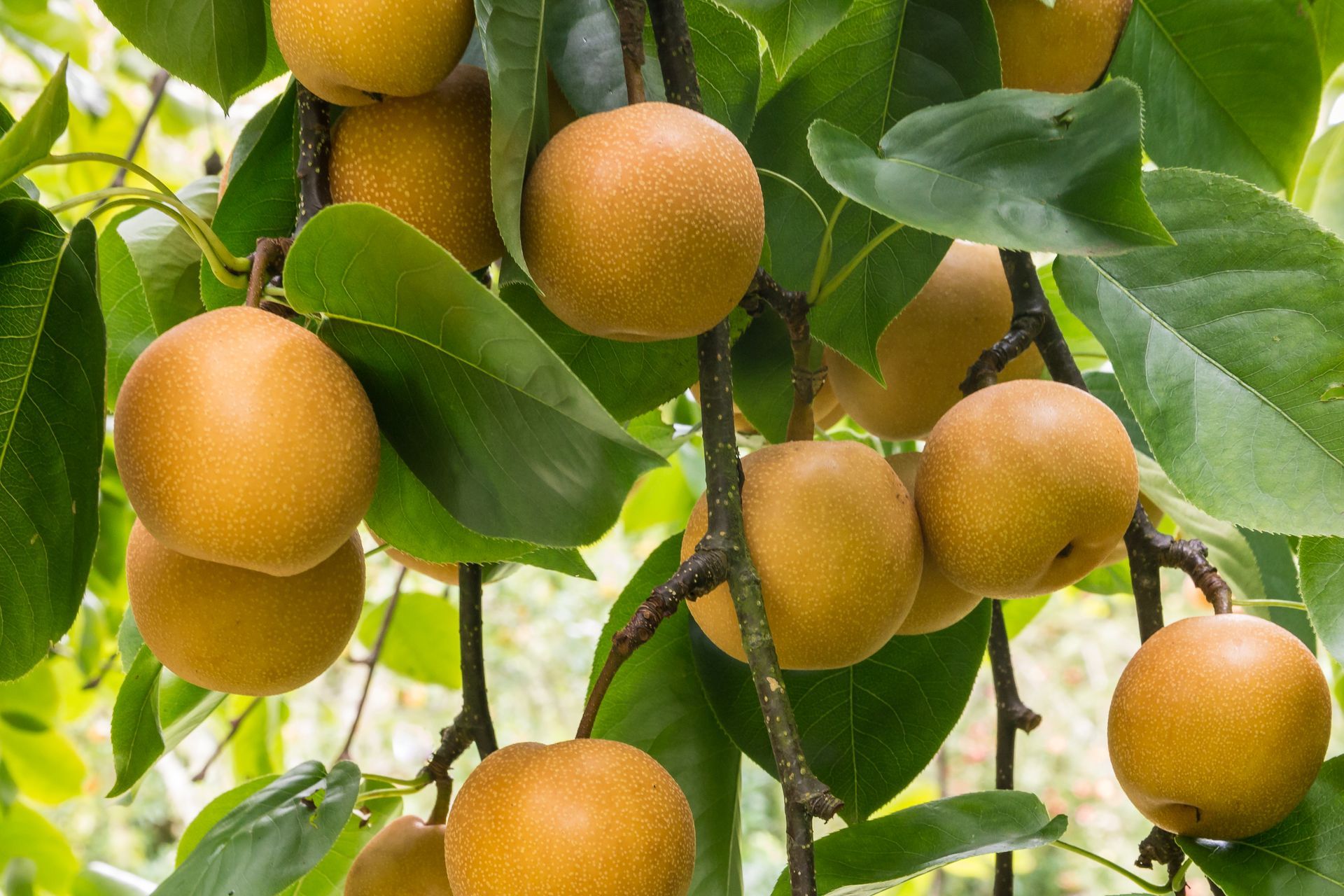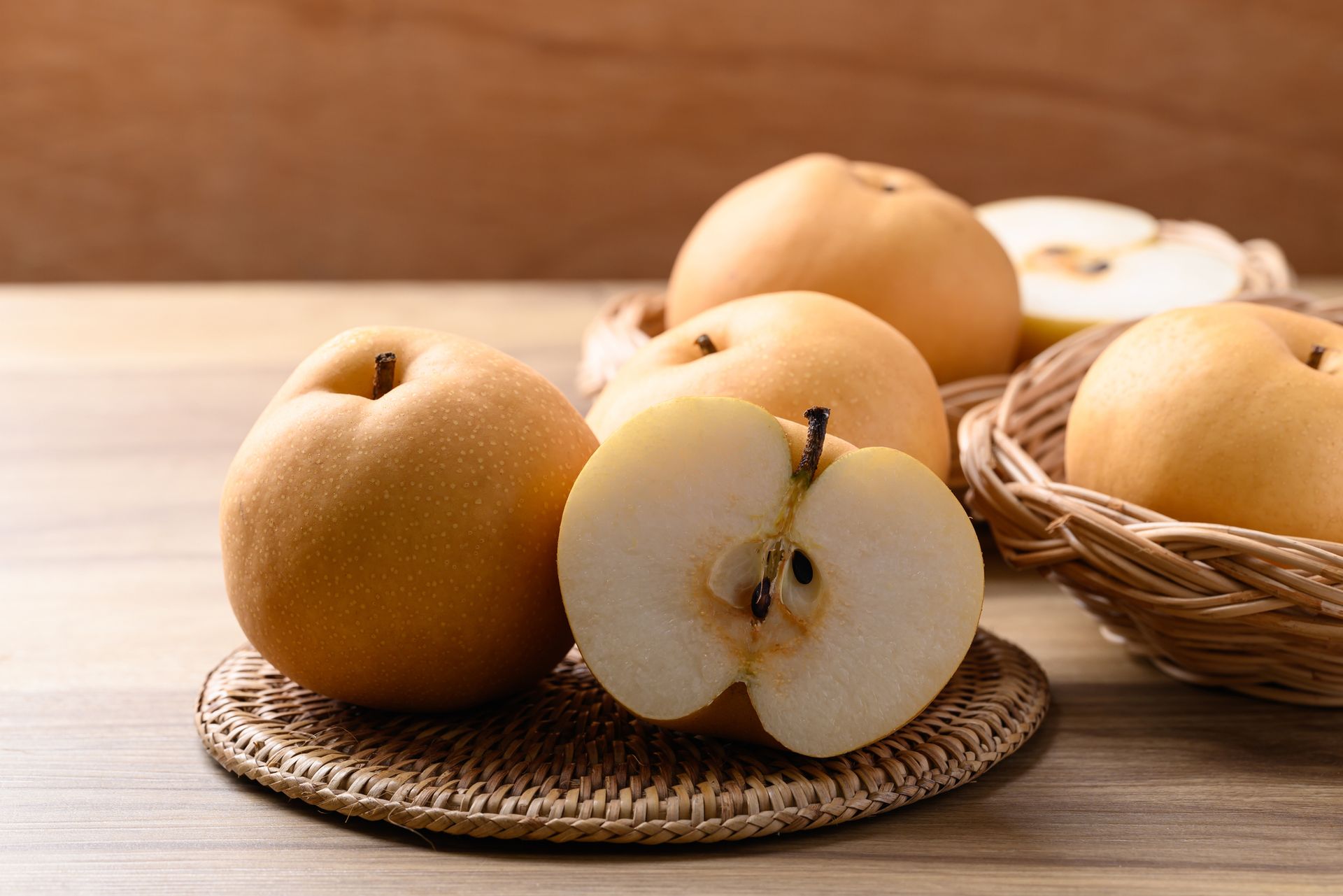ASIAN PEAR
The Asian pear, also known as Nashi or apple pear, is a crisp and juicy fruit native to East Asia and widely grown in China, Japan, and Korea. It is round like an apple but has the sweetness and aroma of a pear. Its thin skin ranges from golden to greenish-yellow, and its flesh is pale and crunchy. Unlike European pears, it is eaten when fully ripe and still firm.
PURCHASE GUIDE
Look for a pear with a smooth, taut skin. Also, it should not have any signs of bruising and its stem should be present.
OPTIMAL TEMPERATURE FOR CONSERVATION
0 - 1 °C for 2-3 months
Keep them refrigerated, as they taste best when chilled. Place them in a perforated plastic bag or on a tray to allow air to circulate and prevent them from becoming too moist.
NUTRITIONAL VALUE
Asian pear is a hydrating and low-calorie fruit rich in dietary fiber, making it beneficial for digestion. It contains vitamin C, potassium, and small amounts of vitamin K and copper. With its high water content and natural sugars, it provides a refreshing energy boost without being heavy. Its crisp texture and gentle sweetness make it a healthy, revitalizing snack.
HOW TO EAT IT
Asian pear is typically eaten fresh and raw to enjoy its crisp texture and juicy sweetness. To prepare it, simply rinse the fruit, peel it if desired, and slice it into wedges or cubes. The core, which contains small seeds, should be removed before eating.
Only the flesh is consumed; the seeds and core are discarded. Asian pear can be enjoyed on its own, added to fruit salads, paired with cheese, or incorporated into savory dishes for a refreshing contrast. It can also be juiced or blended into smoothies for a hydrating treat.






